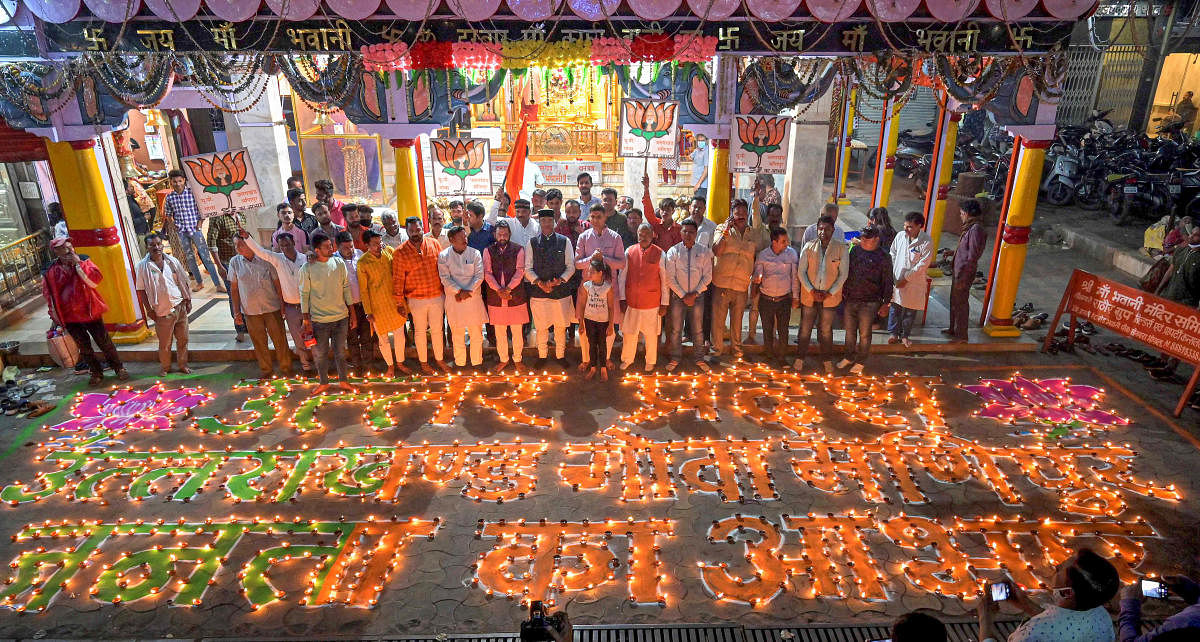
What initially appeared to be a 2017-like BJP vs Congress fight in the Manipur Assembly elections on February 28 and March 5 turned out to be a battle between the saffron party and its regional allies. The results declared on March 10 were somewhat surprising as far as the opposition Congress was concerned, with the rise of regional parties like Nitish Kumar’s Janata Dal (United) and the National People’s Party (NPP).
Congress’ tally was reduced to just five in the House of 60, down from 28 seats in 2017. The BJP, for the first time in Manipur, formed its government with an absolute majority while the NPP, the party headed by Meghalaya CM Conrad K Sangma (the late PA Sangma’s son) emerged second with seven seats; the JD(U) came third with six seats while the Naga People’s Front (NPF) retained its five seats and the Kuki People’s Alliance won the two seats it contested in its maiden electoral battle.
More surprise was in store soon after the results. All the regional parties, which had made anti-BJP issues, such as the long-pending demand for repeal of the Armed Forces (Special Powers) Act (AFSPA) as their main poll plank, started offering their support to the N Biren Singh government. Even two out of three Independents offered to join the government. The result: The Manipur Assembly will have a weak Opposition – there is only Congress, with five MLAs, on that side.
Poll tactics
Political observers said that what seemed like the regional parties’ anti-BJP campaign was in fact a tactic of the BJP’s allies. As the local sentiments on issues like AFSPA was bound to benefit the Congress, the BJP’s regional allies like NPP and JD(U) interposed themselves between the Congress and the voters and harped on these issues, even loudly slamming the BJP for not fulfilling the longstanding demand across the militancy-hit North-East. “The anti-BJP stand we took helped us win seats,” JD(U) in-charge of North-East, Afaque Ahmad Khan told DH soon after the Manipur results.
This “tactical game” helped prevent the anti-BJP votes from going to Congress as well as helped the BJP’s allies rise. This also provided the saffron party with more options for post-poll jugglery in the case of a hung Assembly, which many BJP leaders were expecting.
Of course, the BJP is not going to acknowledge what games it played. Chief Minister Biren Singh has attributed the poll victory to the development delivered by the Narendra Modi-led government at the Centre and the PM’s “concern” for the North-East.
Fallout in Tripura, Meghalaya
The Manipur victory has, no doubt, made the ruling BJP confident in neighbouring Tripura, where Assembly elections are slated for next year. Mamata Banerjee’s Trinamool Congress has set its eyes to defeat the BJP in Tripura. But BJP leaders in Tripura claim that the TMC is not yet a threat and that their biggest challenge will be the Left parties, whom they unseated in 2018 and formed their first government there.
The saffron party, at the same time, is keeping an eye on the rise of Tipra Motha, a regional party, which won the important autonomous district council elections a few months ago. Motha, led by Tripura’s royal scion, Pradyot Bikram Deb Barma, will join hands with parties supporting its demand for a separate Tipraland state for the ethnic Tripuris. The CPM, led by the veteran Manik Sarkar, is against the demand while the Indigenous People’s Front of Tripura (IPFT), a regional ally of the BJP, contested in 2018 on the separate state demand and won all nine seats it contested in a seat-sharing arrangement with the BJP. It needs to be seen whether the BJP will adopt the Manipur-like strategy in Tripura too as far as its ally IPFT is concerned. Tipra Motha, meanwhile, is trying to attract IPFT to its fold.Both NPP and JD(U), however, are hoping to make it big in Tripura the way they succeeded in Manipur. “We are planning to contest in both Tripura and Meghalaya, where we will try to take Nitish Kumar’s model of good governance,” Khan said. In Meghalaya, NPP is leading the coalition government, with the BJP being a minor ally with two MLAs. Trinamool has become the principal Opposition party after 13 of 18 Congress MLAs, including former CM Mukul Sangma, joined it in November.
The five other Congress MLAs extended their support to the NPP-led government, leaving the grand old party practically with no MLA at present in the Assembly. Mukul Sangma was Congress CM for 10 years before the NPP-led alliance wrested power in 2018. Nagaland, which at present has an all-party government (including 12 BJP MLAs out of 60 seats) will also go to elections next year.
Why is BJP winning?
The BJP has retained power in Assam and Arunachal Pradesh, and now in Manipur, despite strong ethnic sentiments against it on issues like the Citizenship Amendment Act (CAA) and AFSPA. The BJP is a minor partner in the Nagaland, Meghalaya and Mizoram governments, led by the regional NDPP, NPP and Mizo National Front, respectively. The BJP says voters now want peace and more development instead of harping on the old issues.
“We have solved the militancy problem in Bodoland, Karbi Anglong and Dima Hasao in Assam, where over 9,500 insurgents gave up arms and joined the mainstream. We have solved the long Bru refugee problem in Tripura too,” Amit Shah said in Manipur. It is, however, also a fact that the states in the North-East have always voted for the party in power at the Centre.
In the Manipur elections this time, the BJP kept silent on AFSPA and identity politics, unlike in 2017. The party said the Centre addressed the identity concerns by fulfilling the longstanding demand for Inner Line Permit (ILP) system in 2020, amid the strong anti-CAA agitation. Under the ILP, people visiting Manipur now require a travel permit, a system already in place in Mizoram, Arunachal Pradesh and Nagaland.